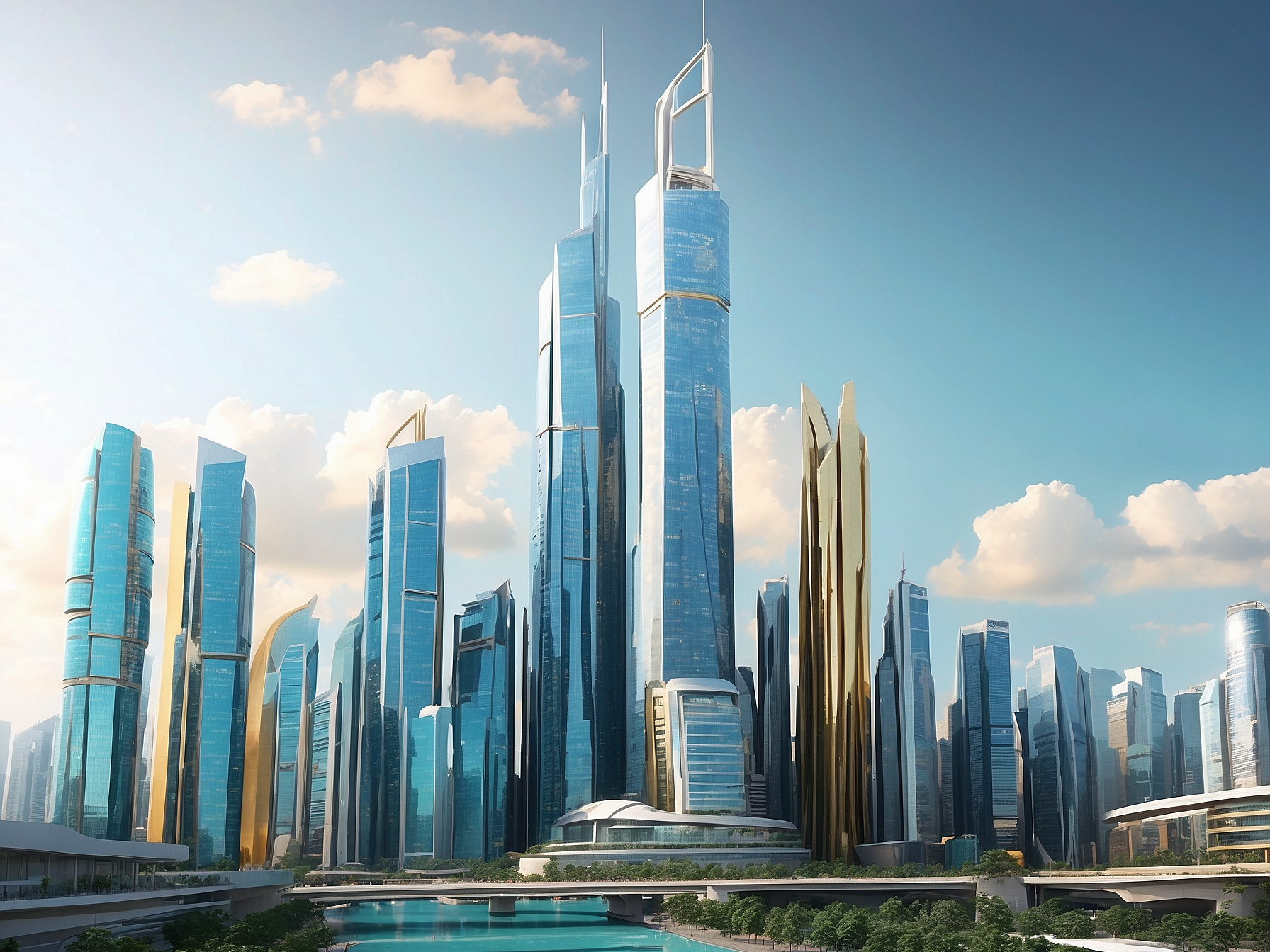Ever wonder why some countries or businesses seem to have all the luck, effortlessly crushing it while others struggle to keep up? Spoiler alert: it’s not just luck—it’s something economists call absolute advantage.
Back in the day, during the Industrial Revolution, England wasn’t just sipping tea and inventing strange sports—they were leveraging their abundant natural resources to outpace other nations. They had the goods, the means, and the smarts to produce more efficiently than their competitors. Fast forward to today, and the concept of absolute cost advantage is still the secret sauce explaining why some players are at the top of the game while others are left eating dust.

The beauty of the law of absolute advantage is that it doesn’t just apply to countries—businesses can get in on the action too. Think of it this way: you’ve got an ace up your sleeve, something special that makes you more productive than the rest of the crowd. Maybe it’s cutting-edge technology, a killer location, or perhaps you’ve assembled a dream team that outperforms everyone else. Whatever it is, if it makes you better, faster, or cheaper, congratulations—you’ve got an absolute advantage.
What is absolute advantage?
So, what exactly is this so-called absolute advantage? Think of it as the economic equivalent of having a secret weapon. It’s when a country or business has a unique edge over competitors—maybe it’s a primo location, top-tier resources, or a workforce that’s basically a team of superheroes. This edge allows them to produce goods or services more efficiently and at a lower cost than anyone else. That’s why it’s also known as absolute cost advantage. When you’ve got it, you’ve got it.
Absolute advantage theory of international trade
Now let’s dive into the nitty-gritty of the absolute advantage theory of international trade. Picture this: some countries or businesses aren’t just playing the game—they’re playing with cheat codes. They have an unfair advantage over others because they’ve got capabilities or tools that the competition simply doesn’t possess. Maybe it’s vast natural resources, cutting-edge technology, or a workforce that’s second to none. This economic theory helps explain why some nations are swimming in wealth while others are paddling just to stay afloat, and why certain businesses skyrocket while others fizzle out.
Adam Smith’s theory of absolute advantage
Let’s rewind a few centuries to meet the granddaddy of economics, Adam Smith. In 1776—yeah, that 1776—Smith dropped his seminal work, “The Wealth of Nations,” and shook up the economic world. He introduced the concept of absolute advantage, essentially giving a polite nod (or maybe a cheeky wave) goodbye to mercantilism. Smith argued that nations should stop hoarding wealth and restricting imports like paranoid dragons guarding treasure, and instead focus on what they do best.
According to Smith’s theory, if every country played to its strengths and engaged in free trade, everyone would come out ahead. In other words, if each nation specialized in producing the goods they have an absolute advantage in, it would be a win-win—or as Smith might say, “a rising tide lifts all boats.”
Smith was no fan of mercantilism—you know, that old-school practice where countries tried to export like crazy while slamming the door on imports using tariffs and other sneaky tricks. He argued that this approach was a one-way street to nowhere because not every nation could get rich by hogging all the wealth. Instead, he championed the idea that embracing free trade and allowing market forces to work their magic would let everyone get a piece of the pie.
Smith’s theory hinged on the productivity of labor when stacking one nation against another. But here’s the kicker: while it sounds great on paper, the gains from trade aren’t always shared equally. The country with the absolute cost advantage walks away with the lion’s share of the benefits, leaving the other nation holding an empty bag. Not exactly the mutual back-scratching Smith had in mind.
Disadvantages of absolute cost advantage theory
Okay, time to play devil’s advocate. While absolute advantage sounds like the economic equivalent of a golden ticket, it’s not all sunshine and rainbows. Here are some of the downsides:
- No Mutual Benefits: The country holding the absolute advantage rakes in most of the gains from trade, while the other country gets table scraps—or worse, goes hungry. Not exactly the spirit of international cooperation.
- Market Imbalance: This principle can skew the market big time. The dominant country can hog the majority of the market share, leaving little room for others to compete. It’s like the economic version of a Monopoly game where one player owns all the properties.
- Potential Exploitation: Countries with an absolute cost advantage might leverage their position to dominate or even exploit other countries. With more resources at their disposal, they can dictate terms that others have no choice but to accept. Power dynamics, anyone?
Assumptions of absolute cost advantage theory
Because every theory needs a good set of assumptions, right? The absolute cost advantage theory stands on some pretty big “ifs.” Let’s break them down:
- Free Trade Always Exists: The theory assumes countries trade freely without pesky policies like trade protectionism getting in the way. As if that ever happens in real life.
- More Resources, More Production: It takes for granted that the country with the most resources will always produce the most goods at the lowest cost. Sure, because having more automatically means using it efficiently, right?
- Easy Exporting: The advantaged country can export its goods and services more easily than others. Customs delays? Never heard of them.
- Fixed Resources: Each country has a fixed amount of resources. No more, no less. It’s like assuming your fridge will always have the same amount of food, no matter how much you eat.
- Same Knowledge and Skills: Everyone knows how to use their resources equally well, leading to unlimited ability to produce goods and services. Sounds a bit like a utopia, doesn’t it?
- Equal Production Costs: Costs are the same across the board for all entities. Because in a perfect world, everyone pays the same for everything.
- No Tech Progress or Transfer: Technological innovation is at a standstill, and countries can’t learn from each other or copy technologies. Tell that to the smartphone market.
- Independent and Unrestricted Trade: Countries trade freely without any restrictions. No tariffs, no quotas, no geopolitical tensions. Just one big happy trading family.
- Maximum Efficiency: Output per unit of input is maximized everywhere. Machines never break down, and workers never take a coffee break.
- No Transaction Costs: Producing goods doesn’t incur any extra costs. Shipping, handling, and paperwork? Nah, they don’t exist here.
These assumptions might make the theory sound good on paper, but let’s be real—they’re about as practical as a chocolate teapot. Real-world complexities tend to throw a wrench in the works.
Problems and criticism
Time to throw some shade at the theory. Here’s where absolute advantage hits a few speed bumps:
- Not Suitable for Multilateral Trade: The theory assumes trade is a cozy two-party affair between countries. In reality, international trade is more like a chaotic party with everyone trying to talk over each other.
- Free Trade is a Myth: Let’s face it, countries love to export but get a little stingy when it comes to imports. Governments slap on tariffs and quotas faster than you can say “trade war” to protect their own industries. So much for free trade.
Factors that determine absolute cost advantage

So what puts one country (or business) ahead of another in this high-stakes game? Here’s the trifecta:
- Resources: If you’re sitting on a goldmine—literally—you’ve got a head start. Countries endowed with abundant resources like oil, natural gas, or fertile soil can produce goods others can’t or can produce them more cheaply. Think of it as Mother Nature’s gift certificate.
- Technology: Got state-of-the-art tech? Welcome to the fast lane. Advanced technology can boost output, slash production times, and cut costs like a hot knife through butter. It’s the difference between handcrafting widgets and having robots assemble them at lightning speed.
- Knowledge: They say knowledge is power, and in economics, it’s an absolute advantage. Countries or businesses brimming with expertise in science, engineering, or management can outthink and outperform those lagging behind. It’s like having a team of Einsteins on your side.
Importance
So why should we care about absolute advantage? Because it’s a game-changer.
When a country or business boasts an absolute cost advantage, they can charge more for their products and still rake in profits. It’s like having a magic wand that keeps competitors at bay while you gobble up more market share.
Take the auto industry, for example. If a company produces better cars than anyone else—maybe they’re safer, faster, or just plain cooler—they hold an absolute edge. This lets them command higher prices without scaring off customers, boosting profits while rivals scramble to keep up. In the cutthroat market, that’s a sweet spot to be in.
How can absolute cost advantage be achieved?

Looking to snag that elusive absolute cost advantage? Here’s your to-do list:
- Secure Cheaper Resources or Capital: Find a way to get your hands on what you need for less. Bulk discounts, anyone?
- Slash Production Hours: Reduce the time it takes to produce your goods to the bare minimum. Remember, time is money—and nobody likes wasting either.
- Cut Production Costs: Keep your production costs significantly lower than the competition. Pinch those pennies till they scream.
- Maximize Efficiency: Use less input to achieve the same or even better output than others. Work smarter, not harder.
How businesses can measure their absolute cost advantage
So you’ve got a hunch you might have an edge—but how do you know for sure? Here are some tools of the trade:
- Benchmarking: Stack yourself up against the competition. Compare performance metrics to see where you stand.
- Cost/Benefit Analysis: Crunch the numbers on your production costs versus your competitors’. If yours are lower, you’re in good shape.
- Competitiveness Index: Rank yourself on factors like innovation, quality, and customer service. If you’re topping the charts, advantage: you.
- Productivity Index: Measure your outputs relative to your inputs. Getting more bang for your buck? That’s a good sign.
- Profitability: Look at how much profit you’re making compared to expenses. If your profits are soaring while costs are low, you’re on the right track.
- Leadership Position: Assess your role in the industry. Are you an innovator or a follower? Leaders often have that coveted advantage.
These methods help businesses figure out if they’re leading the pack or just part of the crowd.
Examples of Absolute Advantage

Time for some real-world examples. Let’s see how absolute advantage plays out for businesses and countries.
Absolute advantage examples in business
- Reliable Infrastructure: Businesses in developed countries often have an absolute advantage over those in developing nations due to reliable infrastructure. Take power supply, for instance. In countries like Nigeria, telecom networks run generators around the clock because the grid isn’t dependable. The cost of fuel and maintenance eats into profits. Meanwhile, companies in developed nations enjoy steady electricity, cutting costs and boosting efficiency. Advantage? You bet.
- Google’s Dominance: Let’s talk search engines. Google doesn’t just lead the pack—it leaves others in the dust. With a massive market share, unparalleled innovation, and a workforce that’s top of the class, Google has an absolute advantage over competitors like Bing or Yahoo. It’s not just playing the game; it’s redefining it.
Absolute advantage examples for countries
- China’s Cheap Labor: With a massive population, China enjoys an absolute cost advantage due to its abundance of cheap labor. This allows China to produce goods like clothing, footwear, and toys at costs others can’t touch. It’s not just about quantity; they deliver quality, too—all at a lower price point.
- Japan’s Technological Edge: Japan is a heavyweight in automobiles, electronics, and computers. The secret sauce? Robots—lots of them. As of 2020, Japan had over 300,000 robots powering its industries, more than any other country. This robotic workforce boosts production while slashing costs and time. Talk about efficiency!
- The United States’ Innovation Hub: The U.S. holds an absolute advantage in technology and innovation. Think about it—Facebook, Instagram, Twitter, and Google all hail from the States. The country also dominates in entertainment and media. With tech hubs like Silicon Valley, highly skilled labor, and robust infrastructure, the U.S. stays ahead of the curve.
- Switzerland’s Financial Prowess: Switzerland punches above its weight in banking and finance. Thanks to early internationalization, fierce competition, and flexible markets, it’s a global financial powerhouse. Add in high wages, favorable tax rates, and political stability, and you’ve got a package that’s hard to beat.
- Russia’s Energy Reserves: Russia isn’t called an energy superpower for nothing. With the world’s largest natural gas reserves, plus abundant coal and oil, Russia dominates the energy sector. This absolute advantage fuels not just their economy but a significant portion of the world’s energy needs.
Plenty of other nations have their own absolute advantages. While we won’t dive deep into each one, here’s a quick rundown:
List of countries with absolute advantage
- Saudi Arabia: Absolute advantage in crude oil production.
- Zambia: Dominates in copper mining.
- Colombia: Excels in coffee cultivation—coffee lovers, take note.
- Germany: Leads in engineering and technology.
- France: Holds an absolute advantage in nuclear energy. It’s the world’s top producer of nuclear energy, boasting companies like Engie SA, Areva, and Électricité de France S.A. (EDF).
- South Africa: Has a leg up in mining minerals like platinum, chromium, and manganese. Check out more here.
Differences between absolute advantage vs. comparative advantage
Let’s clear up the confusion between these two economic theories:
- Opportunity Cost Matters: The biggie is that comparative advantage considers opportunity cost—the benefits you miss out on when choosing one option over another. Absolute advantage doesn’t bother with that; it’s solely about who can produce more efficiently.
- Mutual Benefits vs. One-Sided Gain: Comparative advantage focuses on mutual benefits from trade between countries. Absolute advantage often results in one country reaping most of the benefits, leaving others in the dust.
- Profitability vs. Capability: Comparative advantage weighs the profitability of an activity against other opportunities you could pursue. Absolute advantage? It’s all about capability—who can do it better, faster, cheaper—without considering other options.
Takeaways
What is absolute advantage in economics?
Absolute advantage in economics describes a scenario where one business or country can produce goods or services more efficiently than others. This edge can stem from factors like better resources, advanced technology, or superior knowledge.
How is absolute advantage determined?
It’s determined by identifying who can produce the most output at the lowest cost and in the least amount of time. Essentially, it’s all about efficiency and productivity.
How is comparative advantage different from absolute cost advantage?
Comparative advantage considers the opportunity costs—you know, what you’re giving up to produce something. Absolute cost advantage, on the other hand, simply looks at who can produce at the lowest cost or in the least time, without factoring in other opportunities.
